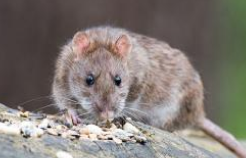Have you noticed small flies infesting your kitchen or work environment? These little pests are known as fruit flies, and they can be a nuisance year-round, especially during the summer months. Learn how to identify and remove these annoying insects.
What Do Fruit Flies Look Like?
Adult fruit flies are about 1/8 inch long and usually have red eyes with a tan upper half and a black lower half.
While this describes the most common fruit flies, there are actually more than 4,000 different species—the most common being:
- Drosophila melanogaster (the common fruit fly)
- Mexican fruit fly
- Mediterranean fruit fly
- Olive fruit fly
- Citrus fruit fly
What Attracts Fruit Flies?
Fruit flies are primarily attracted to ripened fruits and vegetables found in the kitchen or trash. However, they are also drawn to sweet liquids such as juice or alcohol and can breed in drains, garbage disposals, empty bottles, various trash containers, and even damp mops and cleaning rags—anything that may be a food source of organic material.
Are Fruit Flies Harmful?
While fruit flies are not dangerous and do not bite, they have the potential to contaminate food with bacteria and other disease-producing organisms, so it is important to get rid of these nuisance pests.
How to Prevent Fruit Flies
The best way to keep fruit flies away is to eliminate food sources.
- Consume, refrigerate, or discard ripened fruit and vegetables.
- Clean damaged fruits and vegetables that have cracks in them and discard the damaged portion in the event that eggs or larvae are present in the wounded area.
- Place vegetables, such as an onion or potato, that are often left forgotten at the back of a closet, in the refrigerator or in an easily visible area to ensure they get used.
- Carefully seal and regularly clean trash cans and recycling bins that contain organic matter.
- Ensure that windows and doors have tightly fitting screens.
What Smell Do Fruit Flies Hate?
Fruit flies dislike the smell of herbs, such as lavender, basil, mint, and rosemary. Hang or grind up these natural strong scents to help repel fruit flies and keep your kitchen smelling clean.
How To Get Rid Of Fruit Flies
There are several ways to eliminate fruit flies from your home.
Identify The Source Of The Infestation
Once a place is infested with fruit flies, it is imperative that all potential breeding areas must be found and eliminated by:
- Proper cleaning and removal of the food sources are essential otherwise the problem will continue regardless of how often insecticides are applied to control the adults.
- Considering potential breeding sites which are inaccessible, such as garbage disposals and drains.
- Determine suspected breeding areas by taping a clear plastic food storage bag over the opening overnight. If flies are breeding in these areas, the adults will be caught in the bag.
Use Insecticides
Next, after the environment is cleaned, a pyrethrum-based aerosol insecticide can be used to kill any remaining adult fruit flies.
Make DIY Fruit Fly Traps
A more eco-friendly approach is to construct a homemade fly trap by placing a paper funnel into a jar that is filled with a few ounces of cider vinegar to serve as bait. Place the fly trap wherever fruit flies are seen. You may choose to create more than one.
This simple, yet effective trap will quickly catch any adult flies that remain in the location. These pests can then be released outdoors or killed.
Invest In A Carnivorous Plant
Positioning a carnivorous plant is also helpful to control fruit fly populations. The Venus fly trap, although popular, can be mildly effective in dealing with these pests. The most popular plant to get rid of fruit flies is the sundew, as the sweet mucilage on it attracts, traps, and then digests these flies effectively.
Call Professional Exterminators
Locating the source of fruit flies can be tricky, and it’s not uncommon to have more than one summertime pest! Whether you need help identifying the cause of an infestation, discussing your treatment options, or are ready to schedule your fruit fly control service, you can count on Eastside Exterminators to be there to help. Contact us today to learn more about our household pest services in the Seattle area.
FAQ About Fruit Flies
Below we provide answers to some commonly asked questions about fruit flies.
Lifecycle Of A Fruit Fly
The fruit fly has a very simple life cycle, which is commonly completed in as little as a week:
- Eggs—The female adult can lay anywhere from 1-20 eggs onto the surface of rotting foods, especially fruit or vegetables, or any other moist, organic materials, such as regularly watered flower pots. These eggs are often too small to see with the naked eye. In just 2-4 days, the eggs hatch into larvae inside the host fruit.
- Larvae—The larvae (maggots) feed inside the fruit and live off of the bacteria that are introduced when the female lays her eggs. You can likely see the larvae at this stage if you cut open a piece of infected fruit or vegetable. After hatching, the tiny larvae continue to feed on or near the surface of the fermenting food.
- Pupae—Once fully mature, the larvae leave the fruit and look for soil to burrow in to pupate. During this stage, the larvae become encased in a cocoon, where the adult fruit fly develops.
- Adult—In as little as seven days, the adult emerges from the cocoon looking for nourishment. Once nourished by the fermented fruit or vegetables it finds, it will breed and lay eggs once again as the life cycle continues. It is at this stage that you will see fruit flies on your fruit and other organic matter once again.
How Long Do Fruit Flies Live?
Fruit flies live only 8 to 15 days, but in that time period, adults can lay hundreds of eggs. The longer an infestation persists, the more difficult it is to control.
What Do Fruit Flies Feed On?
Maggots and adults eat any decaying fruit or vegetable that is moist and rotting. The pests are also attracted to sugary substances, such as spilled juice or alcoholic beverages left in an open container.
Where Do Fruit Flies Lay Eggs?
Fruit flies primarily lay their eggs on fermenting or rotting fruit and vegetables, or any decaying organic matter that can leave an enticing food source film in a sink or kitchen drain. These pests live on countertops and in common food preparation areas.

 (425) 318-7912
(425) 318-7912
 MY ACCOUNT
MY ACCOUNT
 425-318-7912
425-318-7912








